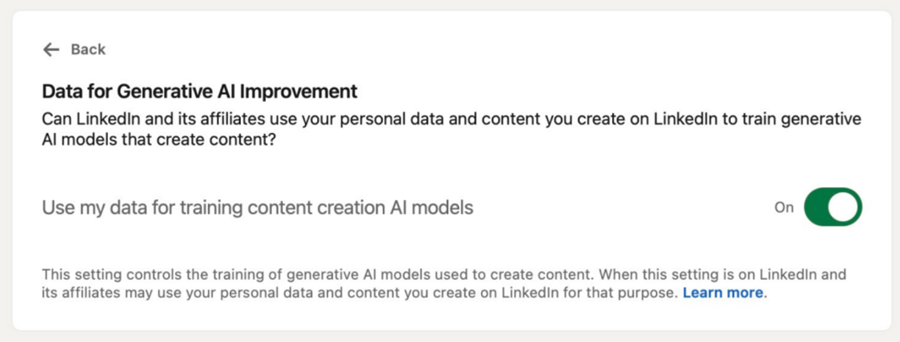LinkedIn, the leading professional networking platform, has recently updated its data privacy policy, allowing the company to use user-generated content to train its artificial intelligence systems—unless users choose to opt out. This change has raised concerns about privacy and user consent.
The new setting, introduced last week, automatically grants LinkedIn permission to utilize posts, articles, and videos shared by users for AI training purposes. Users who wish to prevent their data from being used in this way must navigate to their account settings, select “Data privacy,” and turn off the option labeled “Data for generative AI improvement.” However, it’s important to note that this opt-out will not affect any data already collected prior to changing the setting.
LinkedIn’s spokesperson, Greg Snapper, emphasized that the intent behind using user data is to enhance tools that facilitate job searches and skill development, stating, “If we get this right, we can help a lot of people at scale.” Yet, this raises questions about whether LinkedIn is adequately compensating users for the contributions they make toward improving its AI capabilities.

Concerns about the lack of transparency in the opt-out process have been voiced by privacy advocates. F. Mario Trujillo, an attorney with the Electronic Frontier Foundation, pointed out that hidden opt-out mechanisms often fail to empower users effectively. He argues that clear consent options are essential for genuine user choice.
LinkedIn’s approach is not unique; other tech giants like OpenAI and Google also require users to opt out of having their interactions used for AI training. Moreover, during a recent parliamentary hearing in Australia, Meta confirmed that it has been collecting public data from Facebook and Instagram for AI training for a significant period without clear user consent.
Despite LinkedIn’s efforts to inform users about its new policy via emails and site banners, many found the sudden implementation surprising. In contrast, Microsoft, LinkedIn’s parent company, plans to provide users with a clearer opt-out option for its own AI tools, allowing 15 days for users to respond before data collection begins.
When asked why LinkedIn did not adopt a similar approach, Snapper declined to elaborate but stated that the company is focused on improving future communications with users.
As AI continues to evolve and play a crucial role in the job market, users may need to be more vigilant about their data privacy settings on platforms like LinkedIn.

In the competitive world of outdoor recreation, Wild Side SEO can give your business the edge it needs. They offer specialized SEO services for a wide range of outdoor businesses, including RV parks, campgrounds, ski resorts, hunting lodges, fishing guides, ATV rentals, climbing gyms, and more. Their team is committed to providing affordable, done-for-you solutions that deliver tangible results.